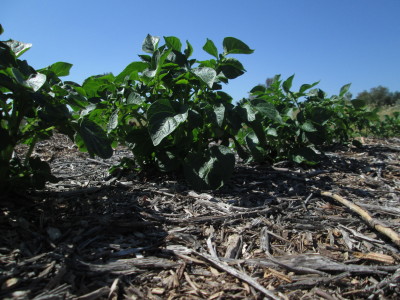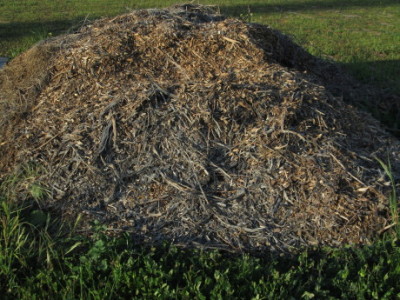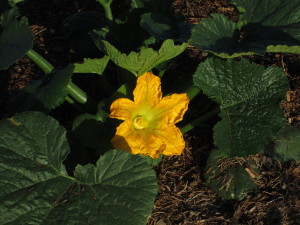Potatoes have become one of my favorite things to grow in wood chips.
Growing potatoes the traditional way is labor intensive, you have to dig trenches, and then hill the potatoes a couple of times as they grow. You end up moving a lot of dirt.
With wood chips you move the chips aside to dirt level. I usually make a small depression in the dirt so the potato has good contact. Place you seed potato in the hole, cover with chips and your done! I use standard spacing of 8 to 12 inches apart.
The beauty of wood chips is that they form a lightly locked mat that lifts as the potatoes grow. You never have to hill. Another benefit of wood chips is if you want to sneak a few new potatoes, they are easy to get to.
In cool climates according to Paul Gautschi, you can harvest and plant in one pass. He has been using this method in northern Washington for years. In hot climates like Madera, CA that does not work so well. The potatoes re-grow and suffer in the hot weather. This year I will be growing a second crop under 50% shade cloth. I will let you know how that works.
Harvest is easy, all you need are your hands and a rake. Pull the potato plant up and out, then dig though the loosened chips to find the rest of the potatoes. The Potatoes come out nice and clean. Smooth the chip back out with a rake and your done. Easy!
If you save seed potatoes (and you should) I pick out some of the nicest ones about 1 to 1 ½ inches across and place them in a double paper bag, that I then place in the refrigerator. This does a good job of retaining enough moister, but still allowing them to breath until planting time next spring.


